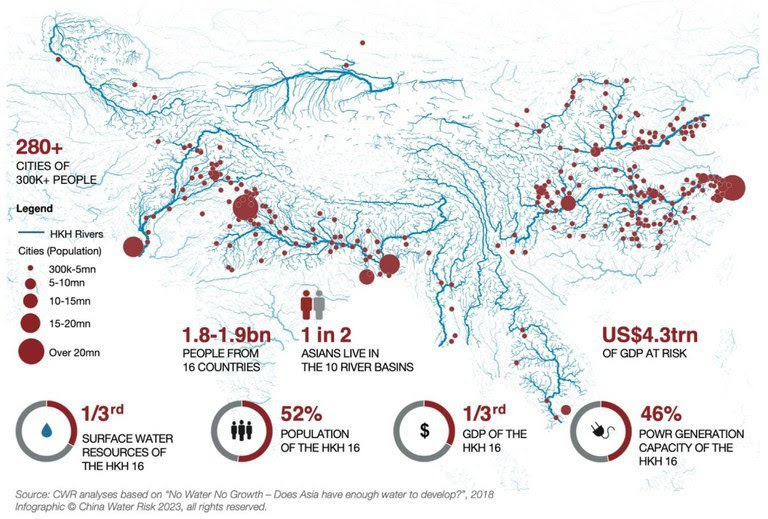By Subel Rai Bhandari for RFA on May 25, 2023 Benar News
Asia’s 10 major river systems that play a vital role in the economies and energy security of 16 countries are facing significant disruptions because of climate change, a new report warns as it calls for urgent action to safeguard regional water flow.
The basins of the 10 rivers originating from the Hindu Kush-Himalayan water towers are inhabited by 1.9 billion people and contribute U.S. $4.3 trillion to annual gross domestic products, said the report “No River, No Power” by China Water Risk (CWR), a non-profit think-tank based in Hong Kong.
The climate change risk means up to one in two Asians could be affected by increasing water scarcity because of accelerated glacial melt, reduced snowfall, changing monsoon patterns and overexploitation of groundwater resources, the report released Wednesday said.
Asia gets most of its water from the Himalayas, Hindu Kush, Karakorum mountains and the Tibetan Plateau. Collectively, they are often called the “Third Pole” or “Asia’s Water Towers,” making up 10 major river basins.
These are the Amu Darya, Brahmaputra, Ganges, Indus, Ayeyarwady, Mekong, Salween, Tarim, Yangtze and Yellow rivers. They flow through 16 countries, including China and most of Central, South and Southeast Asia before reaching the sea or ending in a desert.
Known as the continent’s cradles of civilization, these regions are responsible for almost three-quarters of global rice production.

The report said most of the countries are developing, which means people will flock to more than 280 large cities along the rivers, adding pressure to already stressed systems.
According to the report’s projection, all rivers face escalating and compounding water risks because of climate change, with four of the 10 rivers seeing an overall decrease in river flows by 2050 if the earth heats by the 1.5 to 2 degrees Celsius threshold set by Paris climate agreement.
Such impacts will affect the 10 river systems’ power generation, currently responsible for 865 gigawatts (GW), or 46% of the total electricity capacity in the 16 countries, the report said. It is more than the combined capacity of Brazil, Canada, Germany, Japan and Russia.
“Uncertain future flows of the 10 rivers and extreme weather mean we must curate mountains-to-oceans waternomic roadmaps and energy systems that are resilient to climate change,” said Debra Tan, head of the think tank and lead author of the report.
“National energy and water security plans must thus dovetail. The need to do all this is ever more urgent as doing so will help us manage escalating and compounding water risks as well as meet rising demand for water.”
